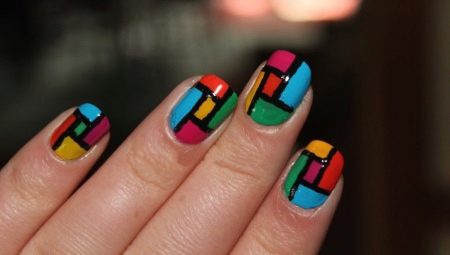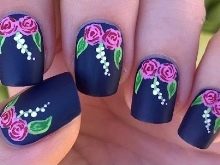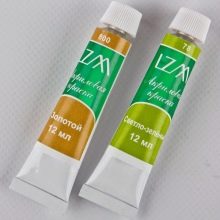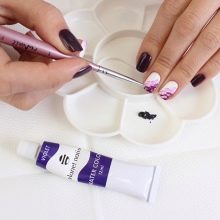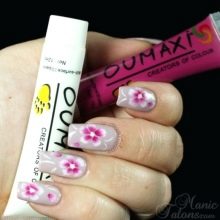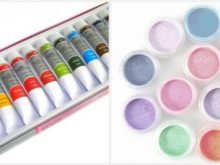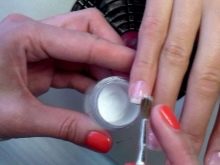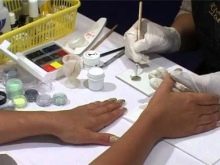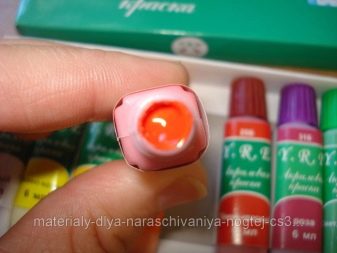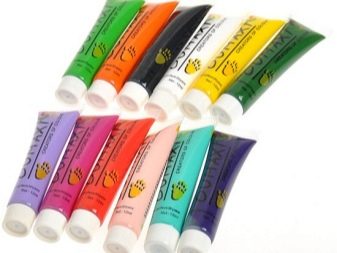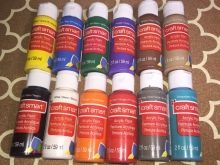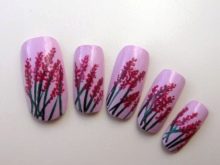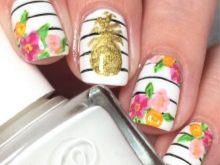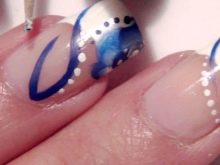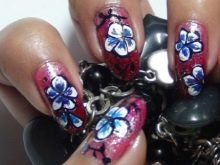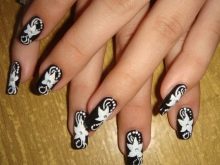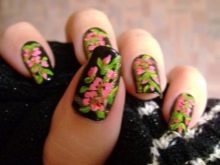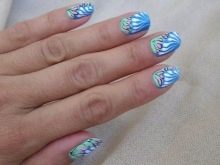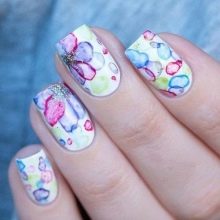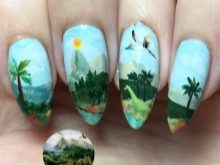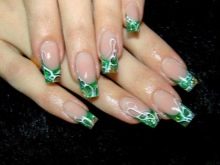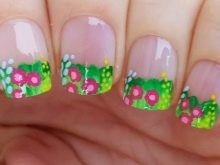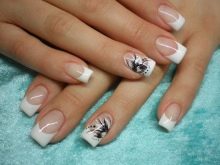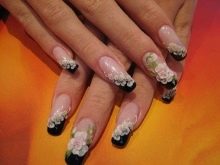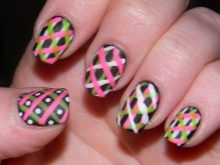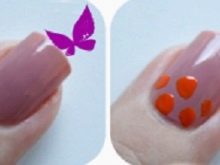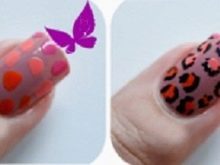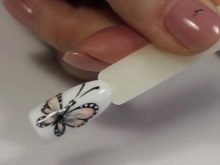Every girl dreams of beautiful well-groomed nails, a stunning manicure. In the modern world there are many techniques for creating interesting and elegant design.
One such technique is drawing with acrylic paints.
Features
Artistic acrylic paints appeared on the market not so long ago. But the popularization and adaptation occurred rapidly, because acrylic paints have much more advantages than other materials.
One such tube contains several components that give the material excellent qualities.
- Water. Due to the fact that one of the components is water, when applying paint to a brush, it does not need to be additionally wetted.
- Concentrated pigment. Pigment is what gives color. To make the color more saturated, there should be a lot of pigment in the paint. According to its structure, the pigment can settle at the bottom of the jar, so the contents of the jar should always be mixed before use. For paints in tubes this can not be done.
- Acrylic resin of high viscosity. This is the component that makes the paint freeze in minutes and does not require additional processing or drying.
According to its texture it can be transparent, translucent, pasty and with a high level of pigment, which completely overlaps the previous layer.
Acrylic is versatile and unpretentious, because you can work with it anywhere and with any texture. It fits perfectly on cardboard, paper, glass, cloth, wood, concrete, and even nails.
Acrylic paints give interesting and saturated colors, they mix together quite simply, without turning into a kind of gray mash, they dry quickly and are economical.
One of the advantages is that these paints do not dissolve under the action of a new layer. They are not afraid of water and do not mix.
Acrylic is applied to both natural and artificial nails, so everyone chooses this paint.
It is easy to work with it for those who have just discovered for themselves the boundless world of nail art, as well as for veterans of this business, because the number of colors, various lines and availability do their job. Acryl takes the leading positions in the market among any paints.
It should be noted that, in terms of its thickness, the paint is also divided into two types: thick and liquid. Thick paint is sold in small jars, it is semi-solid in consistency and does not contain water.
Therefore, before work, the brush should always be moistened with water, otherwise the pigment will not be taken, and only oil will be taken.
Liquid paint is sold in tubes of different sizes, does not require any special preparation before work. All the necessary components are already in the paint itself, so the product is immediately ready for use. Because of its liquid state, it mixes easily with other colors, but due to the oil base it does not turn into gray porridge.
The advantages over thick paints are that the paints in the tubes are ready immediately for use. They can be bought by the piece. Acrylic is characterized by a more extensive palette of colors.
Drawing techniques
Among the fair sex drawings on the nails are in special demand, because it is original, unusual and always interesting. Among a number of different techniques, drawings with acrylic paints are particularly popular, because they are resistant to moisture, do not fade in the sun, do not peel off with time, and do not darken under the influence of the external environment.
Before using acrylic paints, it is worth knowing that they do not tolerate low temperatures at all - they freeze in the cold, and then there is the likelihood of them peeling.
Oily
One of the components that is part of the acrylic paint is oil. Thanks to this brush will be easy to slide on the nail plate, allowing you to draw, create three-dimensional drawings, or simply use the technique strokes.
Pasty
The peculiarity of this technique is that the paint should be applied to the nail, without diluting it before applying. Layers should be dense, not see through. The finish result should resemble the dried gouache.
The advantage of acrylic can be considered the fact that it will not crack after drying and will not fade.
Watercolor
From ordinary acrylic paint, you can get some kind of watercolor. To do this, before applying the required amount of paint to apply to the palette, add water and binder based on acrylic (this is an acrylic dispersion, which is prepared on the basis of acrylic resin). The advantages to watercolor are that acrylic will not be washed off with water and can be easily applied to subsequent layers without thinking about the previous one, which can be broken. But there are such moments that a layer applied with acrylic paint dries too quickly - sometimes this is not always the way.
Glaze
One of the most beautiful techniques for working with acrylic paints can be considered as a glaze technique. It lies in the fact that it is necessary to carefully and consistently apply translucent layers of paint after the previous layer dries. The main objective of this method is the need to produce complex colors by applying lighter and lighter tones to each other. This technique must be performed correctly, slowly, and be sure to wait for the previous layer to dry.
In the nail art, this technique is used to create the background of the main part of the picture or to decorate the French.
Sliding
Sliding is another difficult way to apply a pattern with acrylic paint. This method consists of mixing paint with gel. Gel, first of all, dilute the base color. After the pattern is applied, the gel dries and becomes transparent, and the pigment opens on a brighter side and becomes saturated.
Drawings
Many ladies try to paint on their own with acrylic paints at home and use step-by-step instructions for creating one or another drawing. Usually, the easiest and simplest drawings are taken for the sample, since their execution does not take too much time. The result becomes visible after several strokes.
In the style of "leopard"
This is a completely simple drawing and quite simple in execution. Suitable for any form of nails and length.
At the first stage it is necessary to choose the color that is most like and meets the mood. It must be applied to all nails and wait for drying. Then you need to choose from the palette of acrylic paints those colors that best suit the selected lacquer, and make dots in a chaotic order.
For deeper color dots a thin brush with black paint should outline the contour of each point.
After the acrylic has dried, it is necessary to cover the entire drawing with a clear varnish in order to fix it. Manicure ready.
"Butterfly"
This drawing is one of the most favorite among the admirers of nail art. He is painted by different techniques, but the result is always excellent. The “butterfly” can be used as an addition to the service jacket or moon manicure, or create a summer composition.
First of all, you need to decide on the design and style.in which all manicure will be executed. When this question is closed, you need to apply the necessary varnish on the nails and wait for it to dry completely. The butterfly can be painted with any acrylic colors that are available.
In order to draw a butterfly, you do not need to have a diploma from the school of arts. It's simple - you need to put paint on the selected nail with a brush, drawing four petals. Arrange them should not be too close to each other and not too far.
Between petals it is necessary to draw an oblong oval - this will be the body of a butterfly. Petals, which are wings, should be arranged in an arbitrary technique in circles or stripes. Then you need to draw the antennae and wait until it is completely dry, and then apply a topcoat on top.
For details on how to draw a butterfly, see the next video.
